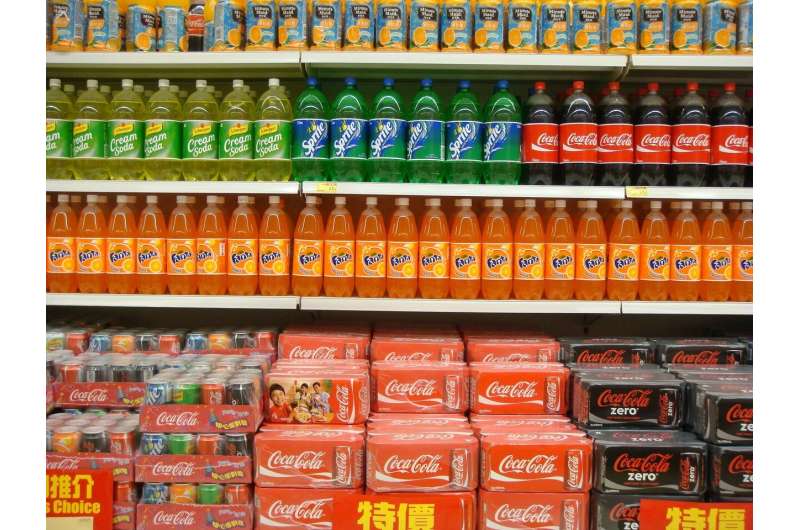Soft drink by-products could reduce global warming

Professor of Chemistry Craig Teague and his students have discovered that the by-products of soft drinks could help reduce global warming.
A Cornell College team of researchers worked with other experts at the Oak Ridge National Laboratory in Tennessee on the idea starting in 2016, and their final conclusions were published in the journal article "Microporous and hollow carbon spheres derived from soft drinks: Promising CO2 separation materials" in April of 2019. Their new research shows that the by-products of some soft drinks actually remove carbon dioxide, a gas known to warm the planet, from gas streams.
"In this research, we are looking at turning one waste material into something of value," Teague said. "We looked at waste soft drinks–asking could we possibly find a way to make that waste useful by doing a simple process in the lab and taking the carbon out? That carbon, by the way we synthesized it, has tiny pores, which are able to capture carbon dioxide."
According to the team's research, soft drink production generates high-volume waste streams, both in the form of expired drinks and waste from the production process. The group selected four different soft drinks at random: Coca-Cola, Push Orange, Diet Mountain Dew, and Diet Pepsi. In the lab, they reduced the soft drinks to carbon powder using a simple, hydrothermal synthesis process. The remaining carbon powder has micropores or tiny spaces that capture the carbon dioxide.
They found their best results with Push Orange and Mountain Dew–both drinks with citric acid. Teague says their findings are distinctive because most materials require the use of harsh chemicals to create the microporous material that can capture the carbon dioxide. The soft drinks did that on their own through the simple synthesis process. They were also surprised to find a hollow cavity in some of their carbon spheres.

Caitlin Stieber '18, Zoe Mann '17, and Ben Williamson '15 helped with the research. All three are listed as authors on the final journal article. Stieber says she enjoyed taking something simple, like soda from a vending machine, and turning it into something that could help with global warming.
"We did find that the soda powders were able to take up more gas than almost any material they had ever measured [in the research group's lab]," Stieber said. "One of the measurements examined how much carbon dioxide would bind to the material and with the instrument we used, the powder was the second highest measurement they had ever recorded. That was a big deal because it was so easy to make."
While industries currently have ways of separating carbon dioxide from emissions, Teague says they aren't very energy-efficient and can be corrosive. He says as we move toward renewable energy resources, the world still depends on fossil fuels and likely will for the foreseeable future. Therefore, it's important to research other options for removing CO2 from waste streams funneling into the atmosphere.
"At this point, researchers around the world are pursuing several different experimental approaches because we don't know which one will ultimately pan out to be best or which one might be best for certain applications," Teague said.
The Cornell College chemistry professor enjoyed working with his students to find new answers to this long-standing question about how to reduce carbon dioxide emissions.
"These sorts of opportunities are really important to students because we don't know the answers to the questions we are working on," Teague said. "I have ideas on how I think it will go, but it's up to us to figure it out. That's really important because that's how science works once students start exploring graduate school and future research options."
Teague says this soft drink method of carbon dioxide separation is far from ready for industrial use, but this new research takes chemists one step closing in finding a cost-efficient waste product that could really make a difference for the future.
More information: Craig M. Teague et al. Microporous and hollow carbon spheres derived from soft drinks: Promising CO2 separation materials, Microporous and Mesoporous Materials (2019). DOI: 10.1016/j.micromeso.2019.04.017
Provided by Cornell College



















